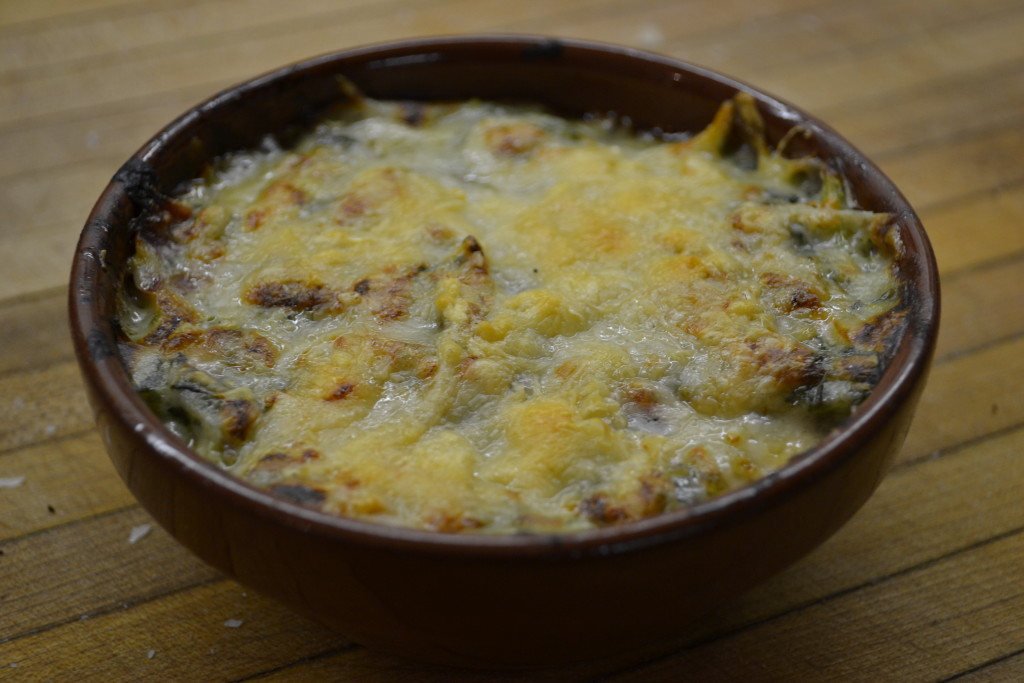On Sunday supplement
Food and Wine
Sea beets are a wild vegetable that grow along the coasts of Europe, northern Africa and Asia. Though often referred to as wild spinach, it isn’t related. It is, however, related to this column as is the ancestor of two vegetables that while wildly unpopular in general in my country of birth, are just as wildly popular here in Argentina. Perhaps this is the “root” of our differences? Those vegetables are the beet and the silverbeet, or chard, or as seed catalog hucksters call it, Swiss chard.
Today I’m going to tackle the chard, here called acelga or acelgas, the singular and plural seemingly used interchangeably. Either way, it’s a leafy green vegetable that looks kind of like very, very large spinach leaves on thick stalks, and for the most part they can be and are used in place of each other in many recipes, though they do have distinctive flavors. Chard leaves are typically separated from their stems, and here, most of the time, the stems are simply tossed, a shame, as they’re highly nutritious and in their own way, just as flavorful as the leaves.
And while perhaps I should be telling you how to use those stems (sauteed in olive oil with garlic, onion and pinenuts, then wrapped in phyllo with brandy soaked raisins, dusted with sugar and cinnamon and baked until golden brown), I’m not going to, as my focus is lightening up some of our commonly found Argentine favorites. Today’s recipe, found in every bodegón out there, is acelga a la crema, creamed chard, generally ordered as a side dish to be shared by the table. If you’ve never tried it, you should, it’s as good or better than creamed spinach (which is found on many a steakhouse menu back home though no one ever really orders it except to pretend they’re eating vegetables).
The traditional approach here, and probably almost everywhere, is to quickly boil chopped chard leaves in salted water, drain them, toss them in butter, cream and salt, and then cook them over a low flame until they meld into a limp mess, top with mounds of cheese, stick under the broiler, and, ya está! And truthfully, I love this version, fat laden as it is, and often indulge my inner Paula Deen, mixing grated cheese and crispy bacon or prosciutto into the hot chard as well. But, alas, this is not a column on how to create a heart attack.
Acelga a la “crema”
3 tablespoons/45 ml olive oil
3 tablespoons/15 gm flour
500 ml cold lowfat or skim milk
1 shallot or small onion, chopped
250 gm chard leaves and stems, chopped
100 gm grated hard cheese of your choice
½ teaspoon ground pepper
¼ teaspoon ground nutmeg
salt
Fill a pot big enough to hold the chard with water and add a couple of spoonfuls of salt and bring to a boil. Add the chard, bring back to a boil, and cook for 5 minutes. Drain and set aside. You can also “shock” the chard if you want in very cold or ice water to help set the bright green color, just for aesthetics. In a skillet over low heat, cook the onions in the olive oil until they’re soft. Add the flour, and cook, stirring steadily, for about five minutes to lightly toast it. Add the milk and turn the heat up slightly to a low-medium and bring to a simmer, stirring regularly. Once it reaches a simmer continue cooking for 7-8 minutes until it gets a thicker, velvety consistency. Remove from heat and season with nutmeg and pepper. Add the precooked chard and about a third of the grated cheese and then add salt to taste. At this point, you can serve it as is, adding in more of the cheese if you wish, or, you can put the mixture in a baking dish, cover with the remaining cheese and stick it under the broiler to brown. Serves 4 as a side dish.
A series of recipes and articles that I started writing for the Buenos Aires Herald Sunday supplement, Food & Wine section, at the beginning of 2012. My original proposal to them was to take local favorite dishes and classics and lighten them up for modern day sensibilities. We’re not talking spa or diet recipes, but at the very least, making them healthier in content, particularly salt, fat and portion size. As time went by, that morphed into a recipe column that, while emphasizing food that is relatively “good for you”, wasn’t necessarily focused on local cuisine. At the beginning of 2013 I decided to stop writing for them over some administrative issues, but it was fun while it lasted.
